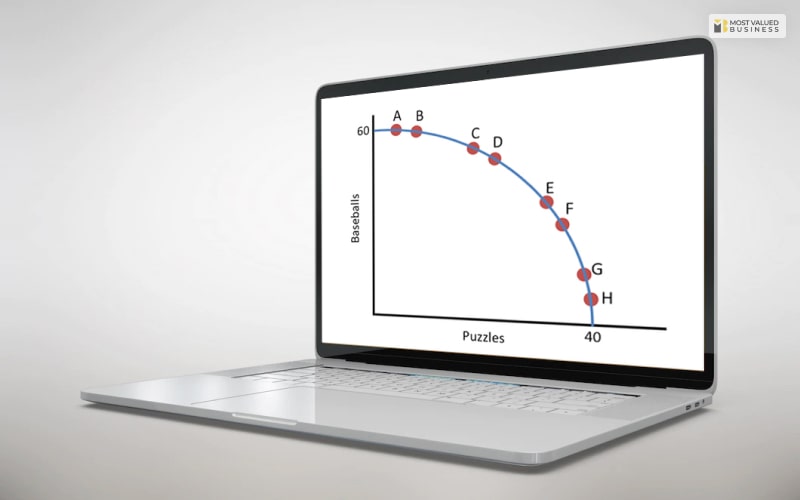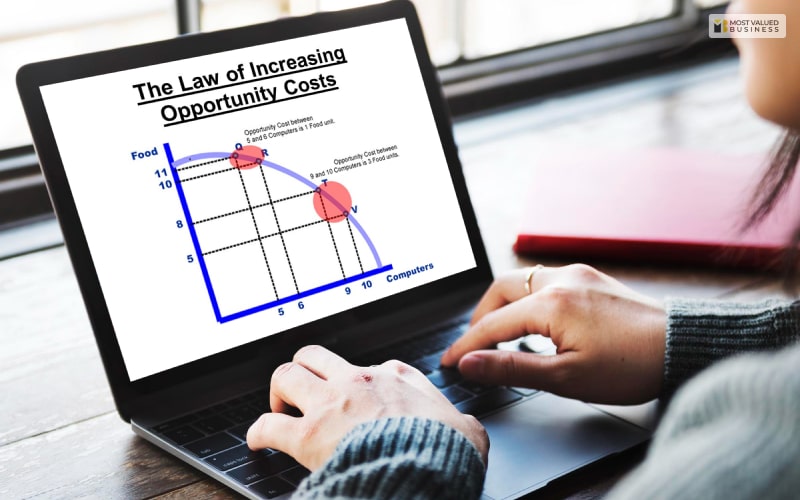What Does Increasing Marginal Opportunity Costs Mean?
So, what is the marginal cost? In economics, the marginal cost is the change in total cost when there is a quantity produced. Or you can say when there is an additional quantity produced. Then the increasing cost is the marginal cost. You will find other contexts where they say that increment in the output or one unit. Then there will be an infinitesimal amount.
Normally, economists measure the marginal cost in dollars per unit (when the total cost is also measured in dollars). The marginal cost is the slope of the rate of output and the total cost. Some people get confused between average cost and marginal cost. But they are different. The average cost is the division of total cost and produced number of units.
Increasing Opportunity Costs
So, I guess now you have an insight into the marginal cost. Now it comes to the marginal opportunity cost. So what is it?
In simple words, the fusion of two terms, marginal cost and opportunity cost, is the Marginal Opportunity Cost. It is an expression to describe the two terms. Opportunity cost is a system to measure the cost of something that is in consideration to achieve. On the other hand, Marginal Cost is to calculate the additional cost that the extra units are producing.
So, Marginal Opportunity Cost means the opportunity cost for extra goods or units that are produced and, finally, the total cost of the production. But do you know when and how the concept applies? There are many situations when businesses need to measure the cost. When there is an increasing opportunity cost, then the cost of the product will increase as well.
So, What is the Law of Increasing Opportunity Costs?
The production good and the opportunity cost are proportional. So, when you are increasing a good’s production, then there will be an increament in the additional good’s opportunity cost.
It’s confusing, right? Don’t worry, I will try to make it simple.
The next-base alternative’s value is the opportunity cost, and when a company makes the decision to increase it, then it increases the production also. Let’s take an example of curved and straight frontier lines.
Normally the opportunity cost is measured from time to time. But when there is a situation of producing different units, then there is a need for the law. The cost is completely related to the factory production. Suppose there is a company that is into leather bags and leather shoes.
So, the company can either spend its resources equally to make shoes and bags, they can spend everything on making shoes, or they can spend all resources to make bags. So, as the company would take one of these decisions, the opportunity cost will increase with that.
When they are into making shoes or bags, then they are missing the opportunity to make or sell any of these products. So, even if they have market share, expertise, material, and every proper resource, then they wouldn’t be making a profit.
There can also be a situation where employees can do better if they have to produce only one product. So, if the company chooses only one type of manufacturing, that means the company is giving full expertise to one product. I hope you the concept of the law of increasing costs is clear to you.
Example
This section is for people who are hearing the term for the first time. There are a lot of students who have difficulties in the first stage of their economics study.
When a company sees or calculates its costs, then there is a need for the concept of marginal opportunity cost. And later, the idea is necessary for future decisions. But when?
When a company decides to sacrifice an item for another item, that is the time the concept comes. For example, suppose a company can normally produce 10,000 pens if there is an eight hours of work. But, the managers of the company have decided that there will be an increament of units. So, now 12,000 units will be produced. So, there is a need to calculate the cost, and to do that, the company will use the opportunity cost concept.
Here, the first thing they need to consider is to calculate the overtime because the company has to pay more. Because employees have to work for an extra shift as the time is same, but production is high. There will also be a calculation of materials that will be needed for those 2,000 extra units.
Frequently Asked Questions (FAQs):-
Here are some interesting questions and answers about marginal opportunity cost.
-
What Happens When Marginal Costs Increase?
Ans: The marginal cost unit is proportional to the production capacity. So, when the marginal cost unit increases, then the production capacity will be expensive. This means a low marginal cost of production for a company comes when they are able to work with lowers costs in the production line and still achieve economies.
-
What Does A Higher Marginal Cost Mean?
Ans: When a company or business is running with lower costs at a particular production volume, that means the marginal cost of production is low. But, when the marginal cost of production is high, the production volume is also high. And the increased production is not in the company’s best interest.
-
What Happens When Marginal Cost Becomes Higher Than The Price?
Ans: When the marginal cost is lower than the sale price, then the company aims to produce units and then supply those. If the marginal cost increases than the price, then there will be no profit in producing. Until and unless the marginal cost and the sale price are equal, the production is stopped.
To Wrap Up
Other than businesses and companies, the concept can also be applied to our daily lives. Suppose you have $100 left in your bank account for this month. And you know that the money will last this month. But, suddenly, there is an expense that you didn’t think of before. So, now you need to calculate again for the rest of the month. And the opportunity cost is the money that you have to spend unplanned. And if there is any other money you need to expend, that will be a marginal opportunity cost. You can think of this as the marginal opportunity cost formula.
Thank You.
Have A Look :-





